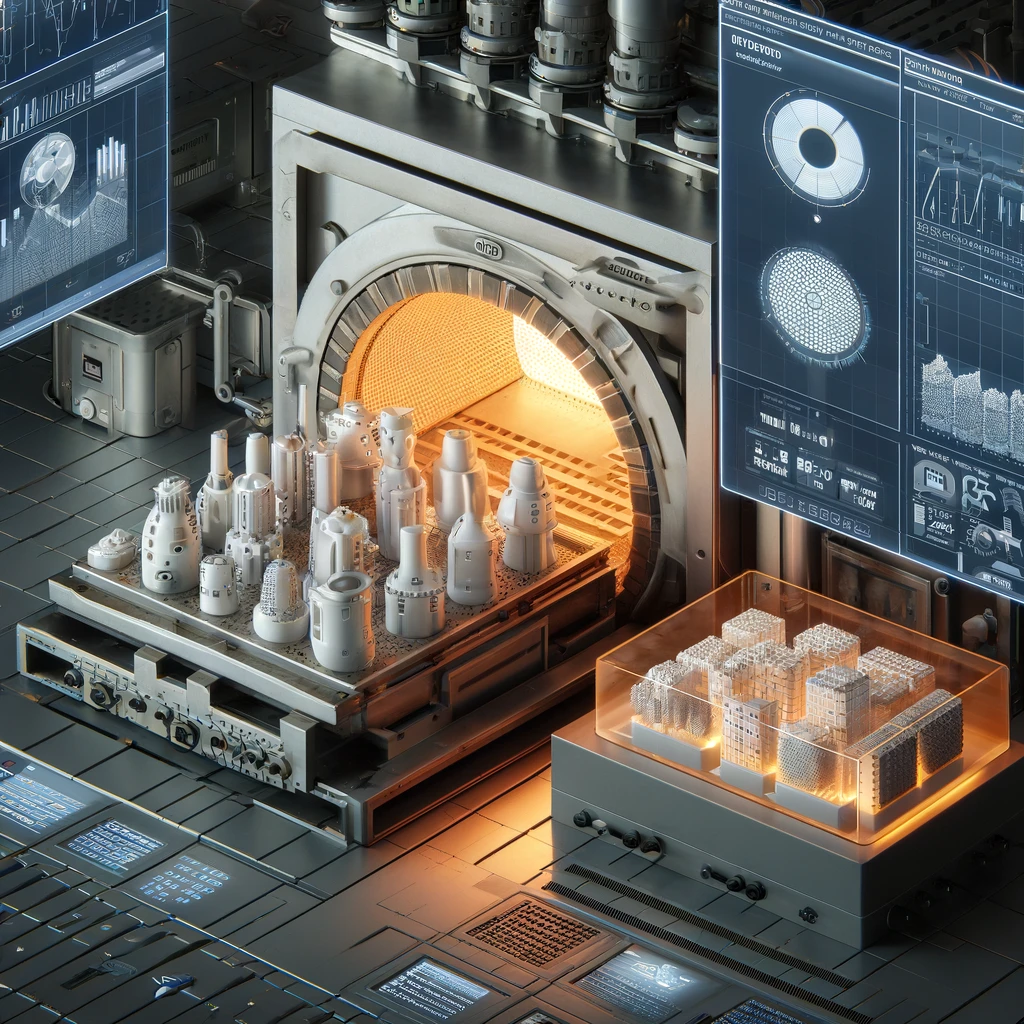
Advancing Precision: Sintering Technology in Ceramic Injection Molding (CIM)
Introduction
Sintering is a crucial phase in the Ceramic Injection Molding (CIM) process, playing a pivotal role in defining the properties and functionality of the final ceramic components. This process transforms the molded ceramic ‘green body’ into a dense, mechanically strong material through a controlled heating cycle. Understanding the sintering technology in CIM is essential for optimizing product quality and enhancing manufacturing efficiencies.
What is Sintering?
Sintering in CIM involves heating the ceramic parts to a temperature below their melting point but high enough to allow particles to bond by diffusion. This step follows the debinding phase, where the polymeric binder used in the injection molding process is removed, leaving behind a porous ceramic part. The sintering process densifies this porous structure by inducing atomic movements that weld the particles together, enhancing the material’s mechanical strength and durability.
Challenges in Sintering Ceramic Components
Controlled Shrinkage: One of the major challenges in sintering is controlling the shrinkage of the material. Since ceramics can shrink by 15-20% during sintering, precise control is required to ensure the final dimensions meet design specifications.
Uniformity of Heat Distribution: Achieving uniform heat distribution within the furnace is critical. Non-uniform heating can lead to defects like warping or differential shrinkage, compromising part quality.
Atmospheric Control: Some ceramics require specific atmospheric conditions to sinter properly. The presence of certain gases can affect the chemical stability and color of the ceramics, necessitating tight control over the furnace atmosphere.
Technological Advancements in Sintering
Advancements in sintering technology continue to push the boundaries of what’s possible in CIM. These innovations include:
Microwave Sintering: This method uses microwave energy to heat the ceramic material internally rather than through surface contact. The result is a faster and more uniform heating process, reducing sintering times and energy consumption.
Flash Sintering: Flash sintering applies an electric field to the ceramic material while it is heated, which can drastically reduce the sintering time and temperature required.
Two-Step Sintering: This technique controls the grain growth during sintering, improving the uniformity and mechanical properties of the material. It involves a high-temperature phase followed by a lower temperature hold to stabilize the material structure.
Benefits of Optimized Sintering in CIM
Effective sintering techniques can significantly enhance the quality and properties of ceramic components. Benefits include:
Increased Mechanical Strength: Proper sintering increases the density of the material, which in turn enhances its mechanical properties such as toughness and durability.
Improved Precision and Reliability: Optimized sintering conditions ensure that the ceramic parts adhere closely to specified dimensions and tolerances, reducing the need for post-sintering finishing processes.
Enhanced Material Properties: Sintering can enhance other material properties, including thermal and electrical conductivity, depending on the ceramic composition and sintering process used.
Future Directions in Sintering Technology
The future of sintering in CIM looks promising, with ongoing research into reducing energy consumption and increasing the efficiency of the sintering process. Innovative approaches like additive manufacturing combined with CIM are also being explored to create complex geometries that were previously unachievable.
Conclusion
Sintering technology is a cornerstone of the Ceramic Injection Molding (CIM) process, critical for achieving the desired material characteristics and performance. As this technology continues to evolve, it opens up new possibilities for the use of ceramics in advanced applications, ranging from biomedical devices to aerospace components. With ongoing advancements, sintering technology will continue to play a vital role in the development and refinement of CIM techniques, driving the future of ceramic manufacturing.


Leave a Reply